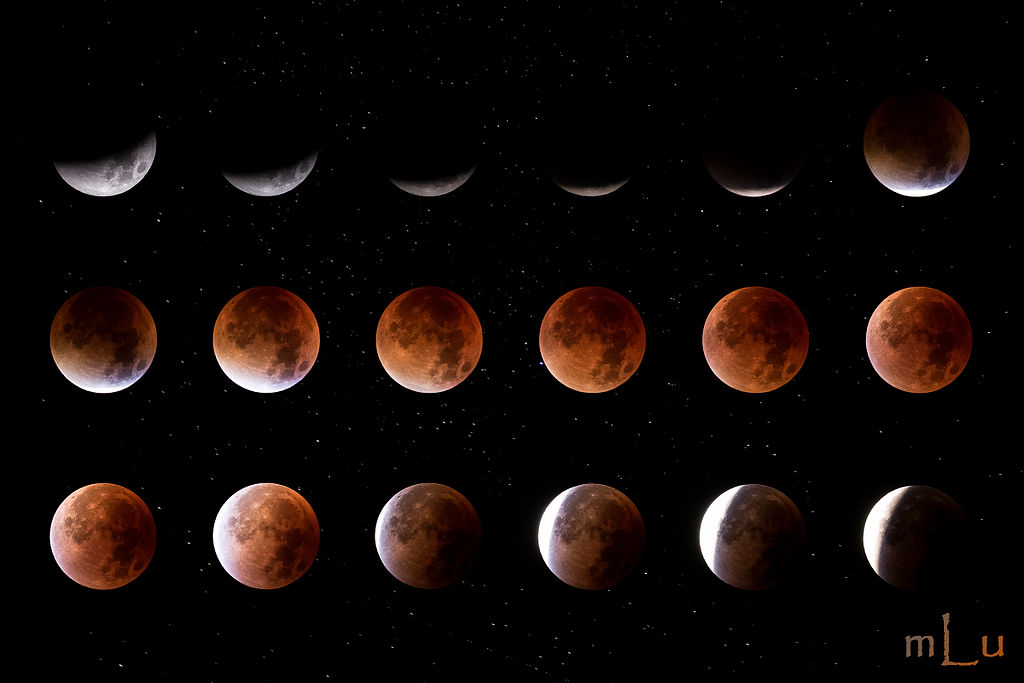It was a frosty night in downtown Garrettsville when the Earth’s shadow began its path across the moon’s surface. There were very few clouds in the sky to inhibit the visibility of our nearest natural satellite, making it an ideal situation for blood moon photography.
The eclipse started at 3:02 a.m. and ended at 8:50 a.m. It was the first time in recorded history that a blood moon occurred on Election Day, and it was also the second blood moon this year: a Super Flower Blood Moon took place on May 15-16. The next lunar eclipse won’t happen again until March 2025.
The initial penumbral phase of the eclipse began at 3:02 a.m., the pre-shadow phase. At 4:10 a.m. the umbral phase began as a visible dark shadow began to bleed across the lunar surface. The shadow had crept across the lunar surface until it became a solid inky dot with a sliver of light on the western limb.

Just before 5:17 a.m., sunlight from the bright side of the Earth refracted throughout the atmosphere, allowing red, orange, yellow and blue light to leak around the edges of the Earth, moon-ward bound.
Blue light doesn’t have the momentum to make it all the way to the moon, but longer wavelength red, orange and yellow light does — those were the light frequencies that kicked off the colorful deep umbral phase of Tuesday’s blood moon. The mild dusting of residual long wavelength light reflecting off the moon had turned the lunar surface dark ruddy red.
As the moon cycled through its umbral phase it became lighter and brighter. Over the course of about two hours the moon had advanced through various shades of coppery orangish red, eventually settling at its final color of delicate pink at moonset: 7:09 a.m. Although the last phase of the eclipse wasn’t visible from Ohio, most of the colorful umbral phase was.

The reddish color of a blood moon during its totality phase is caused by Rayleigh scattering, the same phenomenon responsible for the reddish color of sunsets and sunrises.
When photographing a timely event such as a blood moon, it’s important to scout out photo compositions the night before. It helps relieve some of the stress that would invariably have an impact on the quality and number of photographs taken from a blood moon photo shoot; time is of the essence because the moon moves quite fast across the sky, making it tricky to precisely position it in a composition.
I pre-planned the location of the photos in this article, along with about six other close locations, and while not all of the planned compositions worked out, many of them did, and there were a few surprises, and some happy accidents, as well.

The prearranged practice session allowed for more time spent on the technical aspects of photography, such as taking multiple images for exposure/focus stacking. This is the technique of combining more than one still into a single image. Exposure/focus stacking is necessary when a foreground element is darker than the moon and needs to have a longer exposure time, and also needs to be in focus. When one long exposure is taken to make a dark foreground brighter, the moon would be overexposed and the slow shutter speed would likely introduce motion blur.
A blood moon is one of the most picturesque events that can be viewed from Earth, so if you missed it this time, you’ll have another chance in 2025. Mark your calendar.

